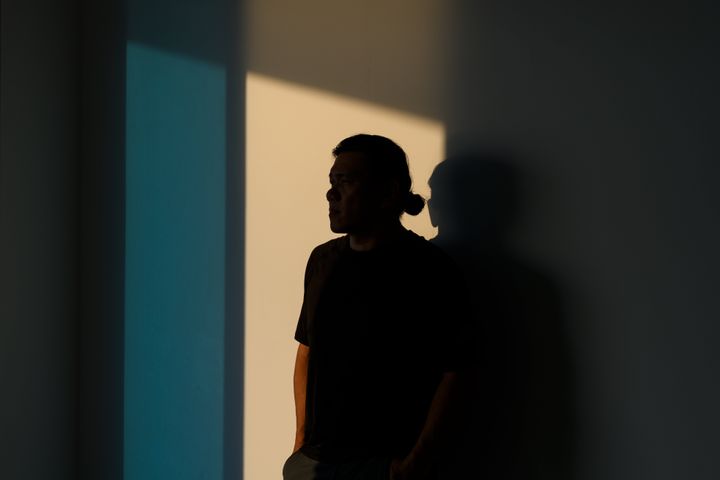
Often, we picture stalkers almost cartoonishly - a man with a long trench coat and a flash camera, hiding in the shadows to follow a celebrity they’re obsessed with. Other times, we use the term ‘stalker’ jovially - “you weirdo stalker!” you might laugh to a friend as they scroll to the bottom of an Instagram feed to find out if so-and-so has indeed broken up with so-and-so.
What we often don’t do is think about stalking in reality; its complexity, seriousness, or danger.
The fact is we need to relearn about stalking and who it can happen to and what it actually looks like – I work at Safer Places, a domestic abuse charity with 40+ years of experience based in Essex and Hertfordshire and this is what we wish you knew about the reality of stalking.
“Normally, the stalking perpetrator is a stranger to the victim”
There is a misconception that stalking is most commonly perpetrated by strangers or fans of celebrities.
In reality, 90% of those who contacted the Suzy Lamplugh Trust (the stalking charity that founded National Stalking Awareness week) already knew their stalker before the stalking took place.
Stalking perpetrators are most commonly ex-partners, making up 45% of all stalking cases, however they can also be current or previous colleagues, neighbours, friends, family members, or any other relation you can think of.
The important thing to remember is that no matter who your stalker is to you, you can get help and support.
“It’s only women who get stalked, and it’s only men who stalk them”
Although the majority of stalking victims are women, they are not the only victims of stalking. In 2016/17, 23% of callers to the national stalking helpline were men, and 25% of callers of any gender were being stalked by women.
Viewing stalking in this heteronormative way also means some victims are hidden from view. LGBT+ people are more likely to be victims of stalking than heterosexual and cisgender people, and LGBT+ victims are less likely to come forward for support or report to the police.
It’s vital that we recognise that, while stalking has a heavily gendered aspect to it, there is no singular rule. Anyone can be stalked, and all victims of stalking should and can be supported.
“Stalking only happens in person”
Stalking used to be considered an offense that could only be committed in person; now, with the huge technological advancements we’ve achieved in our society, online or ‘cyber’ stalking has emerged as an undeniable and considerable component of the stalking landscape.
Research carried out by the Suzy Lamplugh Trust found that 75% of stalking victims reported being stalked online as well as offline, while the National Stalking Helpline reported that, since the pandemic, 100% of cases involved some form of cyber abuse.
We cannot tackle stalking without first understanding the complexities in which it can be committed associated with it. Only once we understand this can we eliminate stalking from our society completely and absolutely – and that means including the prevalence of cyberstalking in our conversations and debates.
“The only way to stalk someone is to follow them”
While stalking can include physically following someone, it is by no means the only or even most prevalent method of stalking. By focusing primarily on the act of following, stalking victims may not recognise their experience as stalking, and support services may not be adequately prepared in their ability to help. Below are just a few examples of behaviours associated with stalking that you may not be aware of:
Waiting in places they know someone will be, such as at the supermarket
Making untrue statements and spreading rumours about someone on or off-line to ruin their reputation
Calling up someone’s phone or place of work, even if they don’t say anything
Destruction of property, such as burning, shredding or slashing tires
Tracking someone via their phone or a device on their car
Leaving someone unwanted gifts or notes
Creating fake profiles to contact someone
Hacking into someone’s social media accounts, emails, or online bank accounts
Collecting information about someone through friends, family members or co-workers
Making threats, either to hurt someone else or themselves
Disruption to someone’s life of any kind, such as messing up schoolwork
“Stalking doesn’t pose that much danger, it’s just a bit creepy”
Stalking is not just scary or inconvenient, but dangerous and traumatic. Stalking is an obsession which can and does escalate in intensity and in risk of death. One study showed that stalking behaviours were identified in 94% of murders; other research shows that 76% of women murdered by their partners, and 85% of women who survived a murder attempt by their partner, experienced stalking first.
Despite being proven to be highly dangerous to victims, the conviction rates for stalking are outrageously low; the Suzy Lamplugh Trust calculated that only 0.1% of stalking cases ended in conviction.
It is essential that we treat stalking with the seriousness it deserves, and that we offer as much support as possible to stalking survivors.
Stalking can be an incredibly isolating experience – you may doubt yourself, distrust those around you, and feel constantly unsafe wherever you are. If you think you or someone you know may be experiencing stalking, help is out there.
Below are links to support services you can reach out to:
Safer Places, a Essex and Hertfordshire specific domestic abuse charity
Suzy Lamplugh Trust, who runs the National Stalking Helpline
Women’s Aid, a national domestic abuse charity specifically for women
Sophie Howarth works with Safer Places, a domestic abuse charity with 40+ years of experience based in Essex and Hertfordshire.